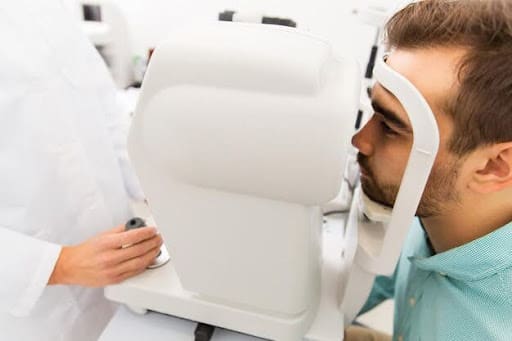Understanding Cataracts : Causes,
Symptoms, and Treatment Options

Dr. Sourabh D. Patwardhan- (Phaco-Refractive-Vitreoretinal- Glaucoma specialist FRCS (UK), MS (AIIMS), DNB, MNAMS, FICO),
Dr. Nidhi S. Patwardhan- (Cataract and Refractive specialist M.D. (AIIMS), FICO, D.O.M.S)
The human eye is one of sensory organ, part of the sensory nervous system. It consists of natural transparent structures i.e. Cornea, Lens also the retina. These are the fundamental structures of the eye which transmit light and help to form images perceived by the brain.
The eye acts as the human camera. Similar to camera, the eyelids function as protective shutters, while the cornea acts as a condenser and converging lens to bend light. Pupil is similar to the aperture of the camera along with the iris that is compared to the diaphragm of the camera. Both iris and pupil help in regulating the amount of light entering the eye. The lens can change its shape with the help of ciliary muscles. This changes the focal distance to the retina and brings the image into sharp focus on the retina. This adjustment of lens is known as accommodation which is similar to the focusing of a photographic camera via movement of its lenses. The rear wall of the eye, lined with a light-sensing canvas called retina, mimics the function of a camera’s film, transforming light into electrical signals for our brain to interpret.
This whole medium is naturally clear and transparent. Any pathology to any structure reduces the transparency and directly affects vision sense i.e. visual acuity, color, contrast, and depth perception.
Cataract is the clouding of the naturally transparent lens that reduces the transparency. It generally occurs in older age, however in this generation due to increased toxicity in environment and lifestyle modification, cataract is developing in early age also.
Congenital cataract or cataract by birth due to some disease during pregnancy and malnutrition is also common in this era. Thus, it is important to check the eyes of babies as well. Cataracts can also occur in childhood if the lens loses its transparency due to trauma of eyes, etc.

Congenital cataract if kept untreated in the critical period of vision development, can lead to lazy eye (amblyopia) and affect vision badly.
The warning sign of cataract is progressive vision loss, along with difficulty in low light condition. This may result in trouble driving, reading, recognizing faces or seeing halos and glare. The lens becomes translucent and eventually opaque. If any of the above symptoms are recognized, it is important to get them diagnosed and treated at an early stage. Later stage with opaque lens increases complications in both treatment and visual outcome.
Cataract surgery has come a long way in recent years, offering patients improved vision and faster recovery time. Smaller incision (2-3 mm) gives fast healing and less discomfort.
Patients who want to avoid surgery in the early stage or need temporary correction may be suggested spectacle and contact lenses to reduce their visual discomforts. Healthy lifestyle along with the eye safety protocol like wearing protective glasses, balanced nutrition, Vitamin-A rich diet helps to maintain eye health. Use of polaroid sunglasses, intake of antioxidants also help to delay the aging process of natural lenses.
Share:
More Posts

Daily Eye Care Routines for Maintaining Good Eye Health

5 Easy Eye Exercises for Reducing Eye Strain

Dry Eye- The Importance of Tears in Maintaining Healthy Eyes







